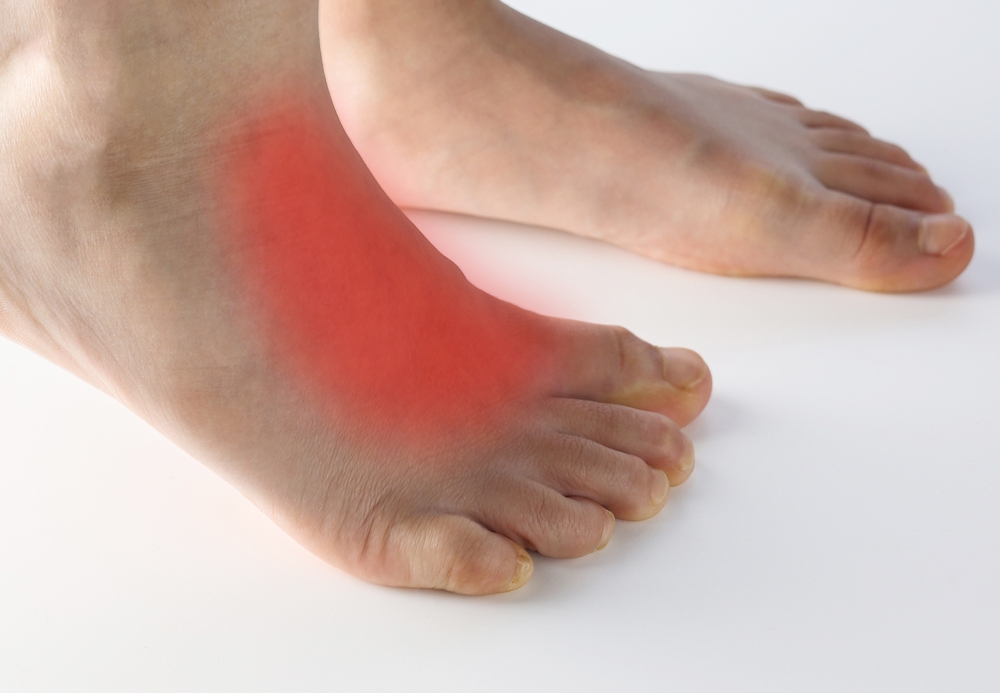
The most frequently painful areas on the feet are the heels, toes, and soles. Because top-of-foot pain is less common, it can be challenging to figure out what to do about it. This type of pain can be caused by several factors. Here’s how to recognize them so you can effectively manage them.
Symptoms of pain on top of the foot
Unlike the typical pain felt in the heels or toes, pain on top of the foot can develop gradually and be felt more diffusely.
It might begin with discomfort or tightness in the shoe. The top of the foot pain may then get worse until you are unable to walk. You might experience tingling, numbness, or burning.
The top of the foot may hurt while at rest or when walking, and it may also become red or swollen.
How to diagnose pain on top of the foot?
It might be time to contact a healthcare provider if your top-of-the-foot pain worsens or persists despite changes in your activities and footwear.
Your gait and the flexibility of your foot can help your podiatrist determine the issue. The areas of the foot that hurt can be felt by palpation. If your pain spreads to your toes when you extend your feet, it is possible that the tendons have been injured.
The results of this podiatric evaluation will show whether the pain is muscular, inflammatory, or affecting the tendons or bones. Once the diagnosis has been made, you will be offered a podiatric treatment, such as medication, rehabilitation exercises, laser therapy, plantar orthoses, or other solutions.
Conditions that hurt the top of the foot
The top of the foot can hurt for a variety of reasons. It can be brought on by a specific illness, such as osteoarthritis, or by repeatedly engaging in impact-heavy activities that result in microfractures. This discomfort can also be brought on by wearing uncomfortable shoes.
The top of the foot has a very thin epidermis with many tendons running through it.
Irritation of this area leads to inflammation of the tendons; this is called tendonitis.
Moving the foot and toes becomes painful in the event of a fracture, and the foot may appear blue and swollen. It will also be very painful to put on a shoe.
When osteoarthritis is the cause, the symptoms are also strikingly stiff.
Finally, the shoe is likely to blame if bruises develop or if the skin appears to be particularly irritated.
Preventing pain on top of the foot
Start by incorporating a few basic gestures into your daily routine to avoid the drawbacks of forced immobilization.
Select supportive footwear that does not constrict you. Warm up your feet a little before engaging in physical activity. This will make the tissues more flexible, improve their ability to absorb shocks, and also protect your joints.
From a practical standpoint, the podiatrist can help you choose orthoses that are appropriate for your morphology and the sports shoes you wear so that your foot is properly supported.
Remember that your muscles need time to recover between sports sessions in order to rebuild.
How to relieve pain on top of the foot?
The first reaction should be to rest if there is pain on top of the foot. Allow yourself to stop practicing your sport for a few days if the pain starts during your activities. You can also sit with your feet elevated for about ten minutes to restore blood circulation.
Ice can be used to soothe inflammation in a sore area. Be cautious, though! To prevent hurting your skin, avoid applying it for too long. It is advised to use it every hour for 10 minutes at a time.
It is crucial to inform your podiatrist of the duration, intensity, and context of your pain if it continues. In addition to monitoring your remission, your podiatrist will also be able to prescribe painkillers.
Preventing the onset of pain on top of the foot
Overfoot pain, like underfoot pain, can be highly crippling if not treated in a timely manner. FootNetwork is made up of experts in podiatry who can help you stop the progression of symptoms and get relief for your pain. Don’t hesitate to contact your local clinic right away.

